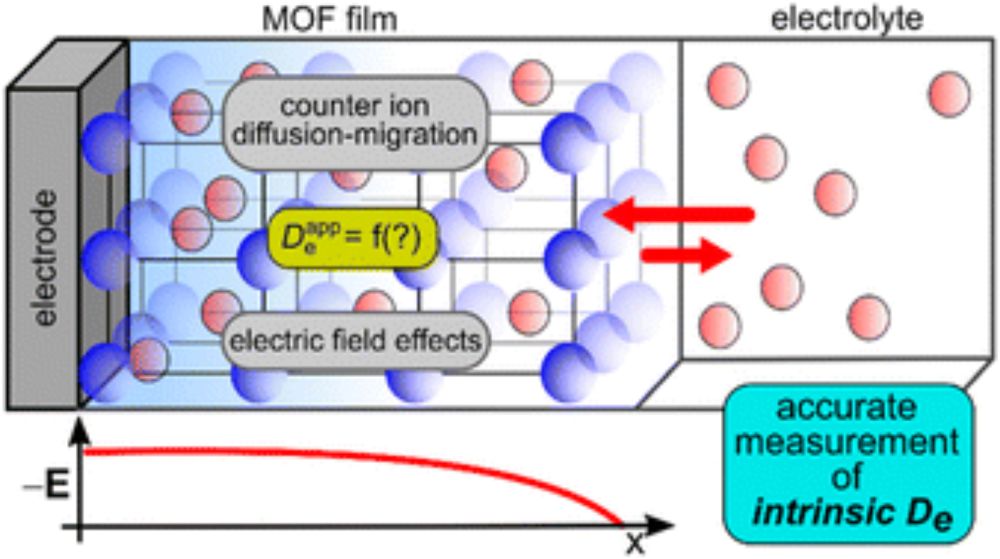We are searching for a PhD student to investigate the reaction mechanism of [FeFe]-hydrogenases and nitrogenases using time-resolved crystallography at Uppsala University.
👇👇👇👇
lnkd.in/ews9CHse
+a we have a two year postdoc position (cv and cover letter to moritz.senger@kemi.uu.se)
10.03.2025 13:35 — 👍 3 🔁 1 💬 0 📌 0
Excited to be here! Kicking things off by celebrating all things Electrochemistry! ⚡ What I love most about Electrochemistry is how it often establishes connections between seemingly unrelated concepts. What about you? #ChemSky
18.11.2024 09:11 — 👍 7 🔁 0 💬 0 📌 0
Fellow electrochemist reporting in—would love to be part of the starter pack! ⚡
18.11.2024 07:49 — 👍 2 🔁 0 💬 1 📌 0
Photoredox, electrosynthetic reaction mechanisms, and photochemistry of tattoos. Associate Professor of Chemistry at Binghamton University (SUNY), father of two. Ally 🏳️🌈 BLM
Assistant Professor @UniBa 🇮🇹 #Bioelectrochemistry #SemiartificialPhotosynthesis #Biomaterials | Previous @MinteerLab.bsky.social PD 🇺🇸 | Motorcycle and Travel enthusiast
We are the Mayer lab at Yale University. We love PCET, charge balance, and are addicted to square schemes!
#jimisrad | student run | @yalechem
Digital Geometer, Associate Professor of Computer Science & Robotics at Carnegie Mellon University. There are four lights.
https://www.cs.cmu.edu/~kmcrane/
Porous materials and crystallography. Currently postdocing at University of Oregon, United States and Uppsala University, Sweden.
Chemistry professor at Missouri S&T, electrochemist, editor-in-chief of the ACS Au journals
Materials chemist, Chief Editor @natsynth.nature.com handling all things materials and inorganic. PhD at @uclchemistry.bsky.social #Chemistry #MaterialsScience. In my spare time I run long distances for fun...
Assistant Professor in Organic Photochemistry at Uppsala University
Editor of the Journal of Molecular Structure
📚 Senior Editor @natsynth.nature.com (handling papers in organic chemistry, materials science, AI and automation).⚡🧪 Electro-organic chemist previously @ucl.ac.uk
#Chemsky
Catalysis, computational chemistry, electrochemistry
VeloxChem team
Research group at Boston University interested in electrochemistry, organometallic chemistry, organic synthesis, and catalysis.
www.derosalab.com
Incoming Asst. Prof. @NYUTandon 🏙️ in Chemical Engineering 🧪 | PostDoc @Caltech | Forbes 30 Under 30 in Science | Electrochemical engineer developing sustainable processes to protect and remediate our atmosphere and oceans | he/him | 🌐 justincbui.com
Professor of Chemistry at Boston University; Labradoodle wrangler; T1 Diabetic; friend of English Majors
Assistant Professor (Spring 2025) in Chemical Engineering at the University of Toronto. I am an electrochemical engineer working on flow batteries and waste conversion. Currently a postdoc at The University of Michigan.
https://bertrand-neyhouse.com
Assistant Professor of Chemistry @UNC Chapel Hill
electrochemistry - materials - catalysis - energy storage
squarescheme.squarespace.com
Putting renewable electrons to work @CUBoulder.
electrochemical science, engineering, and technology research laboratory at the University of California, Berkeley, and Lawrence Berkeley National Laboratory


